A Chagford circuit
There's always something going on in Chagford. In late September, there just happened to be a film festival and though the streets were not covered in red carpets, local traders were keen to show their support. In a number of shop windows, there were visual clues to films. I've been a film buff since I was a teenager. So when I saw a CD of Gustav Mahler's symphonies I did not need a second clue. I just had to show off. The film was Death in Venice. It had to be. I didn't even notice the painting of a gondola next to the CD until much later.
We paused at the windows of various shops to play a few more 'guess the movie' captions. The answers to some came almost straight away, while others were more abstract and required the deployment of our thinking caps. After we had been shopping in Chagford's hardware and camping shop: an Aladdin's cave which seemed to stock almost every conceivable product, there was no time left for a walk.
We returned the following day to pick up where we had intended to leave off: abandoning the town and heading for the hills. Twenty minutes in and we experienced an unusual sight. I have often seen wildlife documentary footage of finches and other birds feeding off the backs of zebras or hippos. But I had never seen magpies doing the same to cows. The latter had laid down in the field and seemed to enjoy being groomed.
Near the entrance to Nattadon Common, a group of Dartmoor ponies watched our progress. We passed on along the road and paused to admire the cross below.
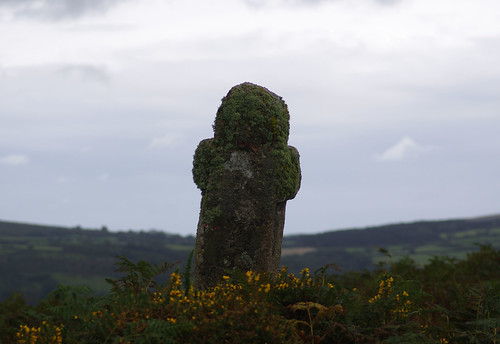
Cross at Week Down
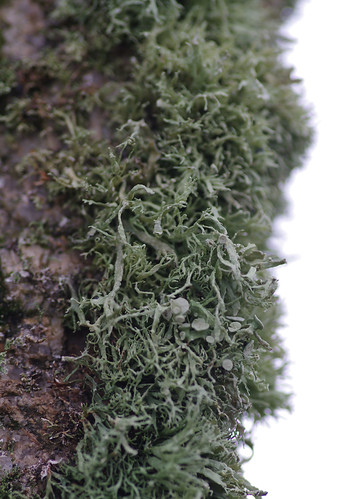
Lichen consortium
These grey-green lichens clung to one side of the cross, or at least they appeared to. Up here, the air felt pure and we enjoyed impressive views. Away to the North East, Castle Drogo sat proudly near the edge of a band of trees.

A host of lichens
There could be four or five different species above. I will forego the usual identification headache and offer the lazy excuse that I can appreciate the patterns without knowing what they are comprised of.
Along the lanes, rowan trees were replete with ripe, red berries; ready to be picked by thrushes when the cold snap comes.
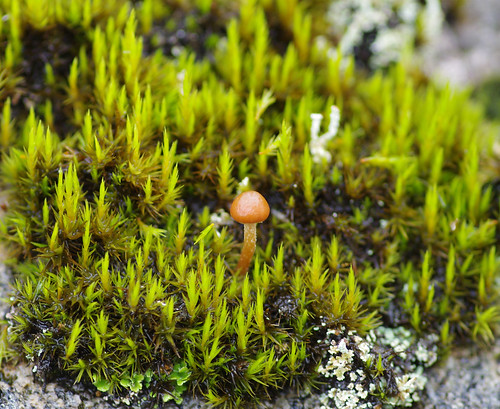
Orange Mosscap (Rickenella fibula)
This species grows amongst diminutive mosses. The cap is slightly more rounded than other examples I have seen but it otherwise fits the general description well enough. The tops of walls are a great place to look for a variety of life (especially since the flowers are now fewer and farther between.)
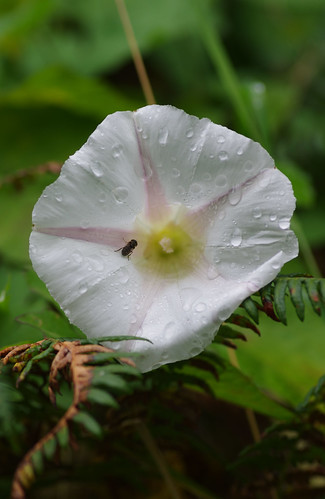
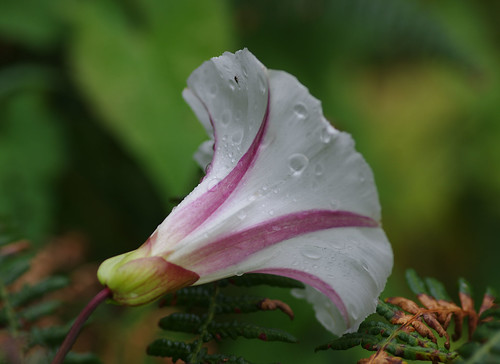
Two views of Hybrid Bindweed (Calystegia x scanica)
Initially, I was sure this flower was Large Bindweed. Then I looked at the excellent http://www.aphotoflora.co.uk site to double-check and found a species I had not heard of or seen before. The fluted backs of the petals were striped with pink exactly as the one above. Bindweeds are considered a nuisance by gardeners (they can easily strangle the life out of a hedge if left unchecked.) The dewdrops give them an almost romantic aura while the bracteoles at the base of the flower could almost be rose petals. We might not want them in the garden but here bindweeds are impressive and clearly in their element.


Unknown fungi
It would not feel like a proper blog entry without a mycological mystery or three. These strange forms really left me perplexed. There are numerous cup fungi but in all of the field guides I have scanned, I have not seen a single photo or illustration of a species with a lid. These put us in mind of slightly overdone pork pies. They were growing out of a pile of gravel at the side of the lane.
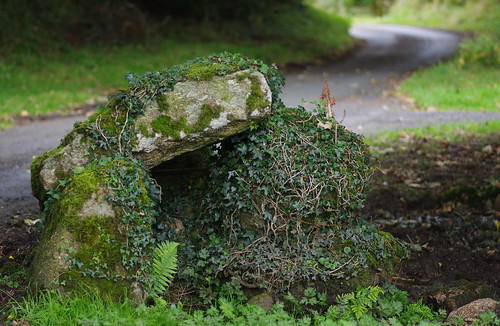
A watering hole
People may have taken water from here for centuries. It's somewhat humbling to walk the same steps as many souls who have gone before you; wondering what they did and thought about. The past lingers but offers few answers for those looking back through the mists of time.
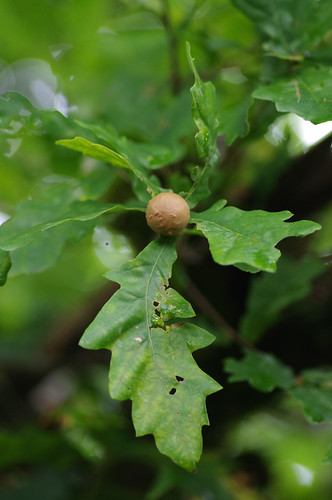
Gall of the Oak Marble Gall Wasp (Andricus kollari)
From this round shape, a wasp will eventually emerge. They are a common sight on many of our native trees and shrubs. If you see one and it contains a small hole then the chances are a tiny wasp has already hatched.
We had passed a couple of distinctively Devonian signposts at crossroads and junctions. They pointed to intriguing, mythical-sounding names such as Nattadon, Horselake and Batworthy. At length we left the sleepy lane behind and threaded our way up a path where no clear path seemed to exist. Then we traversed Week Down and at its end found one of those lanes that looks and feels as if it has stayed the same since before the Crusades. We walked down the path between two fields and delved into moss-covered boulders and relative darkness. We stopped for lunch, perching eagerly on a rock like two hungry hobbits.
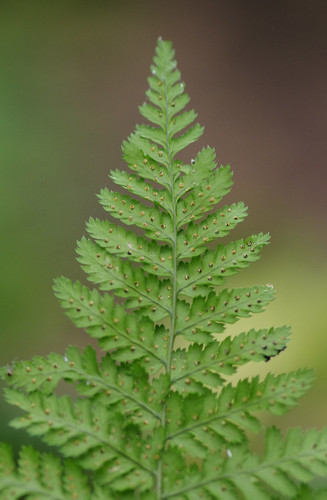
I think this is one of the Buckler ferns, possibly the Broad Buckler-fern (Dryopteris dilitata)
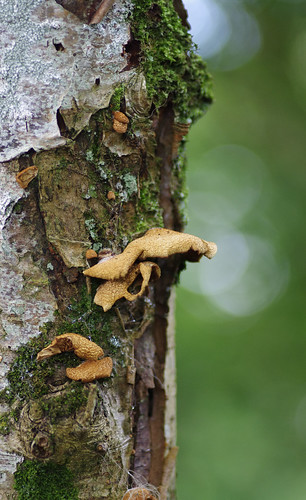
Bracket fungus on tree
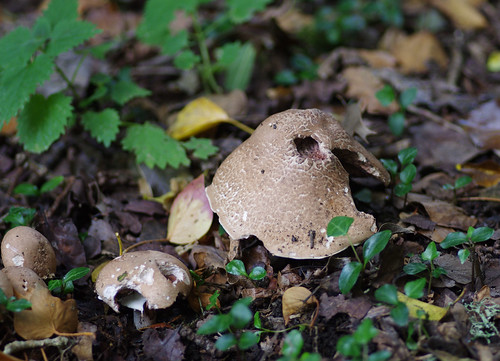
Another unknown species

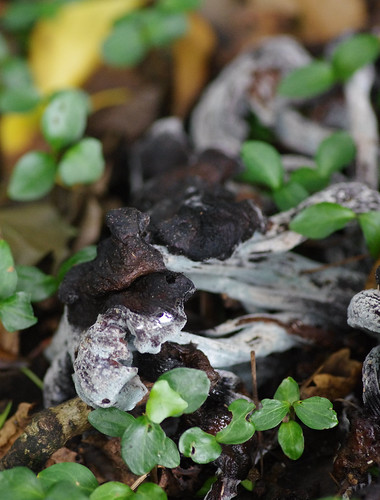
The species above exuded a strong, smell of damp, rotting wood. The wonderfully named 'Stinkhorn' came to mind but the pictures above don't appear to match those of the phallic stinkhorn.

Shaggy Parasol (Macrolepiota rhacodes)
It had grown up through the bramble on the left (either that or the bramble had grown and pierced it from above.) Near the bottom of the path, the avenue opened out and we could see the fields on both sides again. Old bathtubs had been left as drinking troughs for the cows.
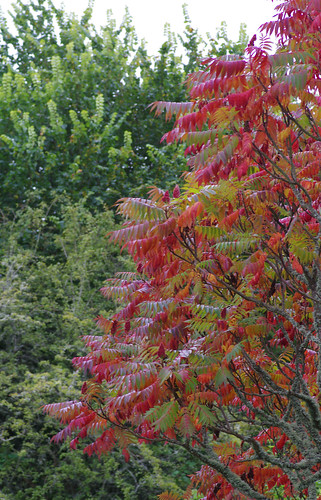
Stag's-horn Sumach (Rhus typhina)
I had gone far down the rowan track when I saw these leaves. But looking at this image on the computer, Sherry spotted something I had missed. The crimson-flowered spikes mark this tree out. Originally from North America it has often been planted here for its gorgeous display of colour.
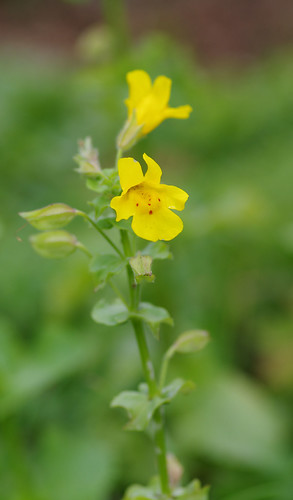
Monkeyflower (Mimulus guttatus)
This flower is a common escapee from gardens. It grows in damp ground. In this case it was next to a trickling stream.
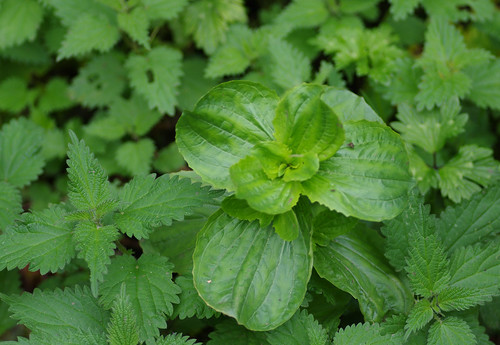
Monkeyflower leaves

Leaves of Rock Stonecrop (Sedum forsterianum)
Through a cobwebbed veil, Sherry captured what I thought might be a type of clubmoss. By chance I found the real answer one evening, when browsing in the Collins Flower Guide.

Leaves of Herb Robert (Geranium robertianum)
The edges of this flower's leaves are often tinged red and sometimes a whole leaf follows suit. You would think after the flowers have gone there would be no more dazzling displays. But so many plants adapt to the change in season by transforming in colour. There's never a dull moment being a wildlife enthusiast!
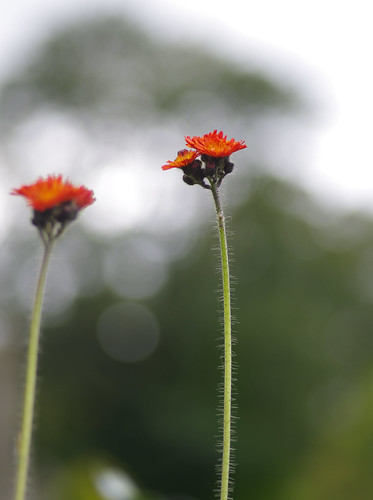
Fox-and-cubs (Pilosella aurantica)
We must have seen this flower umpteen times this year. In this case it was growing on the wall of a churchyard. The hairs on the stem really stand out and the lens has done its job by creating a nice bokeh in the background behind.
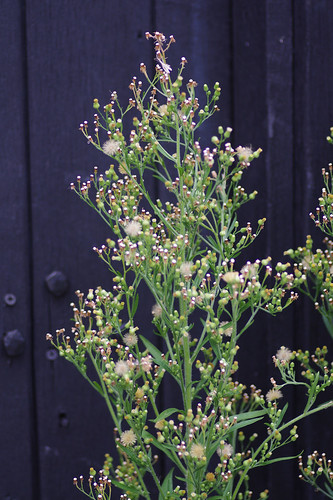
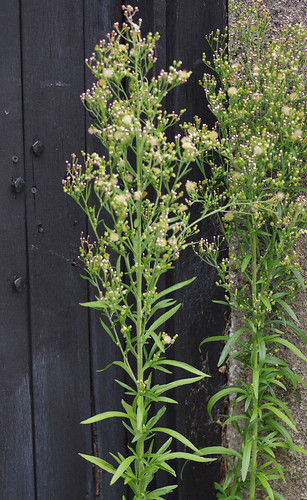
Canadian Fleabane (Conyza canadensis)
When we came into the centre of Chagford, we saw one last species to add to our list. This flower prospers in urban areas. These specimens were almost my height and had grown undisturbed against someone's back gate. Then we bid our hasty farewells to Chagford; knowing we had barely scratched the surface. There are many other routes to walk and species to find. I look forward to the next sequel with bated breath.

Comments
Add a Comment